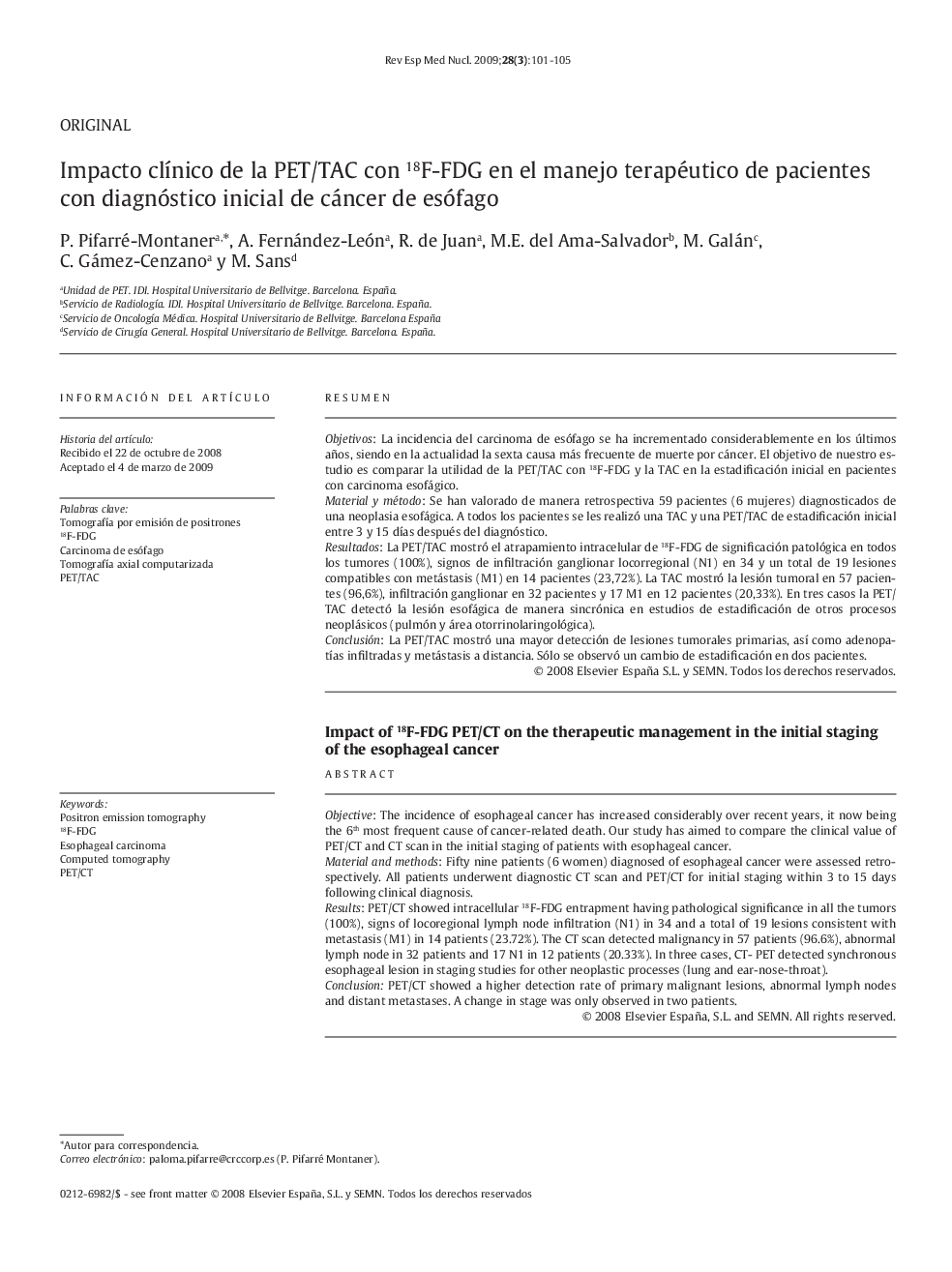| Article ID | Journal | Published Year | Pages | File Type |
|---|---|---|---|---|
| 4249105 | Revista Española de Medicina Nuclear | 2009 | 5 Pages |
ResumenObjetivosLa incidencia del carcinoma de esófago se ha incrementado considerablemente en los últimos años, siendo en la actualidad la sexta causa más frecuente de muerte por cáncer. El objetivo de nuestro estudio es comparar la utilidad de la PET/TAC con 18F-FDG y la TAC en la estadificación inicial en pacientes con carcinoma esofágico.Material y métodoSe han valorado de manera retrospectiva 59 pacientes (6 mujeres) diagnosticados de una neoplasia esofágica. A todos los pacientes se les realizó una TAC y una PET/TAC de estadificación inicial entre 3 y 15 días después del diagnóstico.ResultadosLa PET/TAC mostró el atrapamiento intracelular de 18F-FDG de significación patológica en todos los tumores (100%), signos de infiltración ganglionar locorregional (N1) en 34 y un total de 19 lesiones compatibles con metástasis (M1) en 14 pacientes (23,72%). La TAC mostró la lesión tumoral en 57 pacientes (96,6%), infiltración ganglionar en 32 pacientes y 17 M1 en 12 pacientes (20,33%). En tres casos la PET/TAC detectó la lesión esofágica de manera sincrónica en estudios de estadificación de otros procesos neoplásicos (pulmón y área otorrinolaringológica).ConclusiónLa PET/TAC mostró una mayor detección de lesiones tumorales primarias, así como adenopatías infiltradas y metástasis a distancia. Sólo se observó un cambio de estadificación en dos pacientes.
ObjectiveThe incidence of esophageal cancer has increased considerably over recent years, it now being the 6th most frequent cause of cancer-related death. Our study has aimed to compare the clinical value of PET/CT and CT scan in the initial staging of patients with esophageal cancer.Material and methodsFifty nine patients (6 women) diagnosed of esophageal cancer were assessed retrospectively. All patients underwent diagnostic CT scan and PET/CT for initial staging within 3 to 15 days following clinical diagnosis.ResultsPET/CT showed intracellular 18F-FDG entrapment having pathological significance in all the tumors (100%), signs of locoregional lymph node infiltration (N1) in 34 and a total of 19 lesions consistent with metastasis (M1) in 14 patients (23.72%). The CT scan detected malignancy in 57 patients (96.6%), abnormal lymph node in 32 patients and 17 N1 in 12 patients (20.33%). In three cases, CT- PET detected synchronous esophageal lesion in staging studies for other neoplastic processes (lung and ear-nose-throat).ConclusionPET/CT showed a higher detection rate of primary malignant lesions, abnormal lymph nodes and distant metastases. A change in stage was only observed in two patients.
